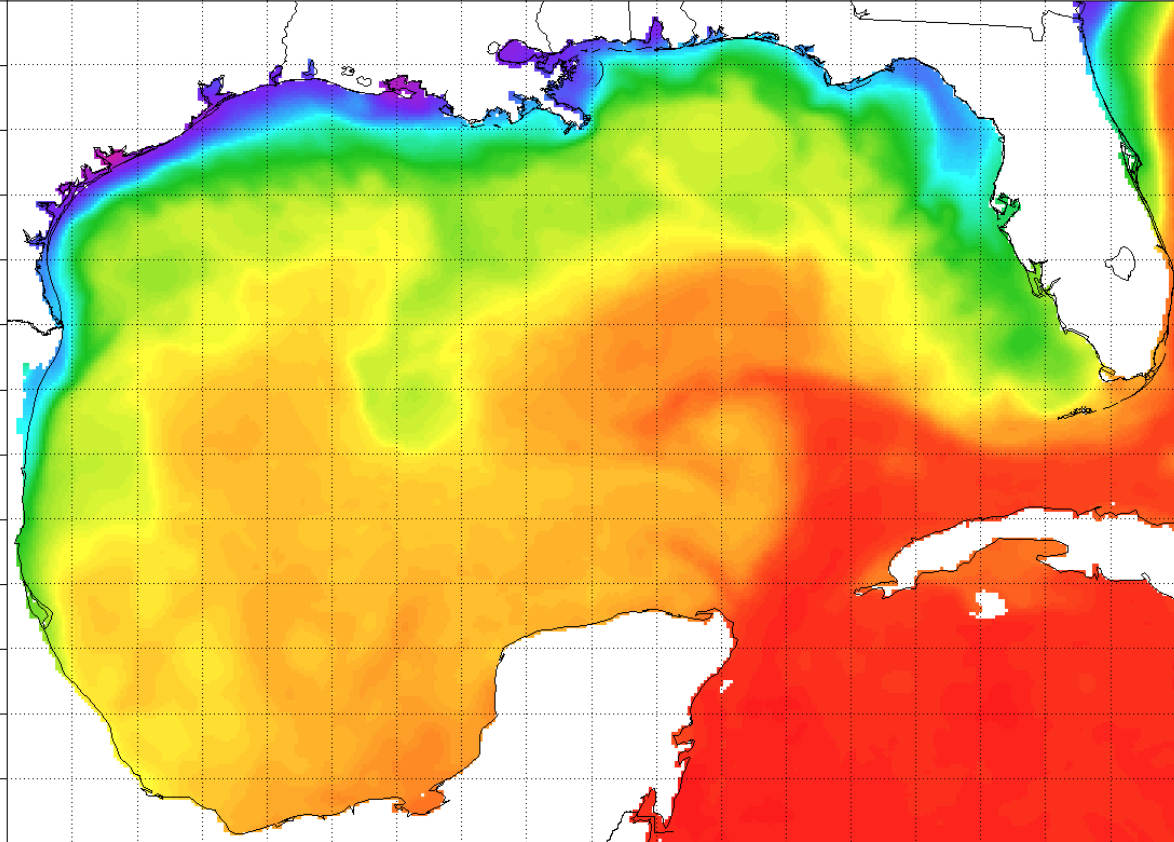A new study says sea surface temperatures in the Gulf of Mexico have warmed about twice as much as global ocean waters since 1970.
Those findings indicate the Gulf of Mexico may be one more U.S. region where higher sea surface temperatures are outpacing global averages. Another is the Gulf of Maine, where the rate has been nearly triple of the world’s other oceans since the early 1980s.
The latest research comes from a joint effort between scientists at the National Centers for Environmental Information and the Northern Gulf Institute (NGI), a National Oceanic and Atmospheric Administration Cooperative Institute. It quantifies the warming trend in the Gulf of Mexico’s ocean heat content over the past 50 years.
The study, published in the American Meteorological Society’s Journal of Climate, shows that waters closest to the surface in the Gulf of Mexico have increased at a rate approximately twice that of the global ocean in the decades between 1970 and 2020.
“Due to its large size and the complex current system, the Gulf of Mexico is home to important marine species including red snapper, Florida Manatee, and Rice’s whales,” according to the NCEI. “The Gulf also provides valuable economic benefits to the countries that border it – the United States, Mexico, and Cuba – including shipping, oil and gas, and fisheries. Understanding the changes in this oceanic basin are vital to its long-term ecological and economic health.”
To estimate the change in the Gulf of Mexico’s ocean heat content, NCEI and NGI scientists analyzed 192,890 temperature profiles collected from 1950–2020 in the Gulf of Mexico and publicly available in the World Ocean Database. Collected by instruments such as autonomous gliders, Argo floats, and CTDs (Conductivity-Temperature-Depth), each profile provides a snapshot of oceanographic conditions over multiple depths at one time from one location.
The data show that the Gulf of Mexico sea surface temperature (SST) increased approximately 1.0°C (1.8°̊F) between 1970 and 2020, equivalent to a warming rate of approximately 0.19°C (0.34°F) per decade. The Gulf of Mexico warmed at twice the rate of warming in the global ocean near the sea surface. Warming occurs at all studied depths from the sea surface to bottom with the largest warming rates found in the upper 50 meters (164 feet).
“Understanding how this major climate driver affects the Gulf of Mexico is necessary for effective management. Oceanic warming can exacerbate many of the threats to the Gulf of Mexico ecosystem including sea level rise and hypoxia or the ‘dead zone,’” according to the NCEI. “Warming also increases the intensity of hurricanes, escalating the damage to coastal communities and the loss of wetlands.”







